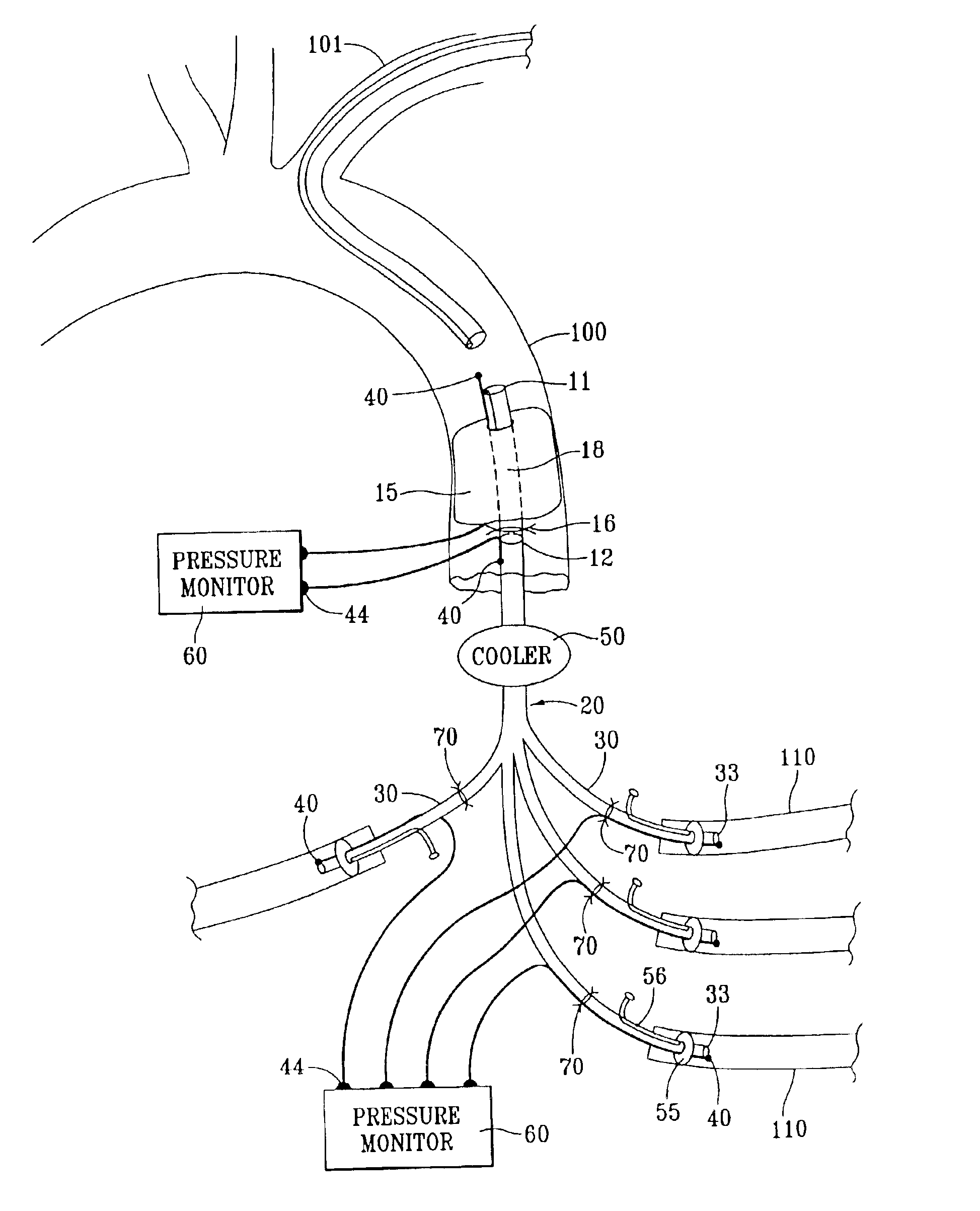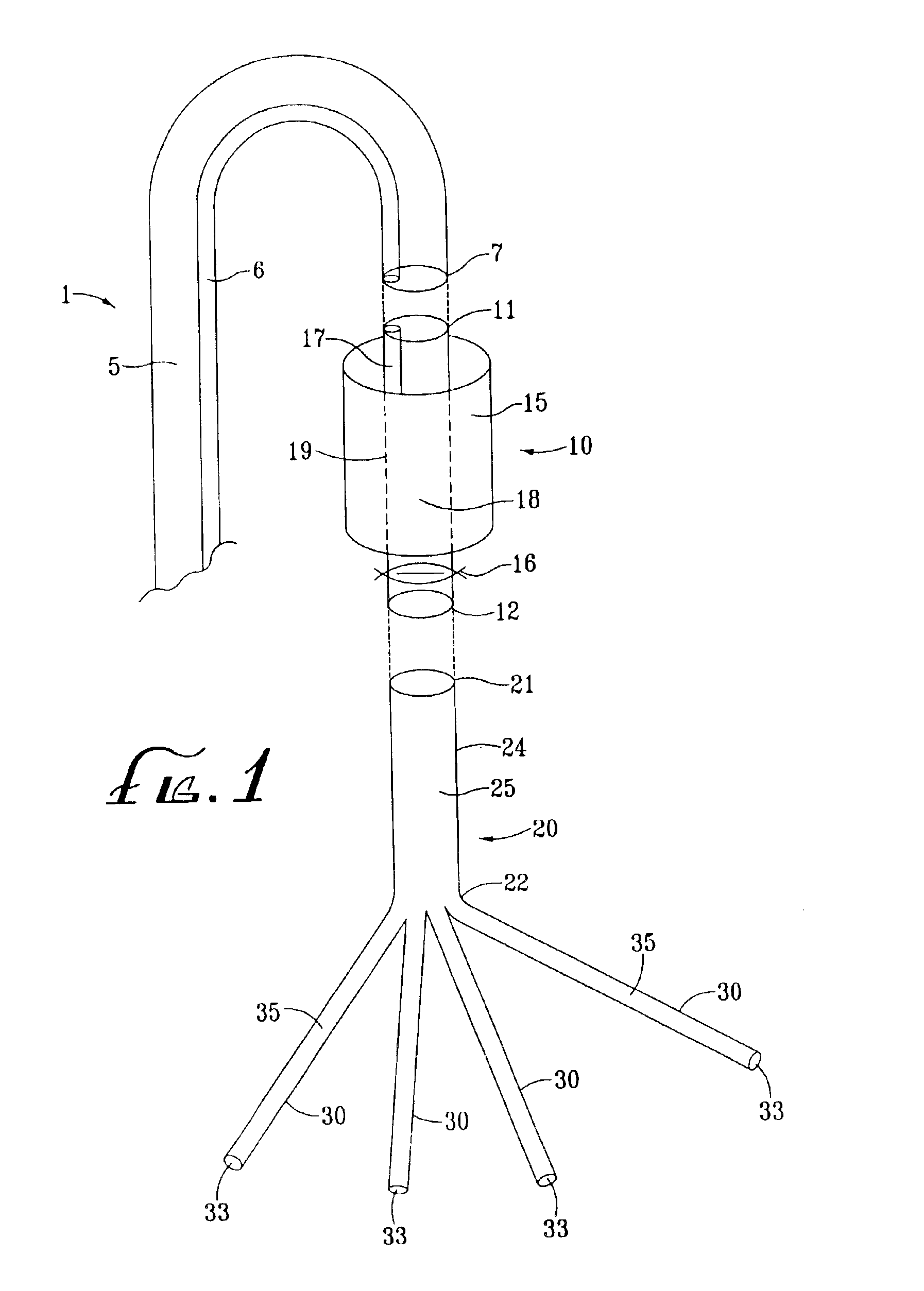Aortic shunt with spinal perfusion and cooling device
a cooling device and shunt technology, applied in the field of medical devices, can solve the problems of inability to insert the device, the shunt fails to specifically perfuse the spinal arteries, and the risk of thromboembolism, so as to avoid the risk of systemic hemorrhage and reduce the risk of embolism
- Summary
- Abstract
- Description
- Claims
- Application Information
AI Technical Summary
Benefits of technology
Problems solved by technology
Method used
Image
Examples
Embodiment Construction
Referring now to the drawings, an embodiment of the intravascular device for perfusing a patient's spinal vasculature during thoracoabdominal surgery is depicted in FIG. 1. The device generally comprises an intra-aortic component having catheter 1 and aortic shunt 10, and an extra-aortic component 20. Catheter 1 has lumen 5 communicating with a proximal end and distal end 7. Aortic shunt 10 comprises tubular member 19 which has lumen 18 communicating with proximal end 11 and distal end 12. First end 11 of the shunt is releasably mounted to distal end 7 of the catheter. Expandable occluder 15, shown here as an inflatable cylindrical balloon, is disposed about tubular member 19, and communicates with inflation lumen 17. When shunt 10 is mounted to catheter 1, inflation lumen 17 communicates with inflation lumen 6 of the catheter. Shunt 10 also includes valve 16 distal to occluder 15 for controlling fluid or blood flow through lumen 18 of the shunt.
Second component 20 comprises second ...
PUM
 Login to View More
Login to View More Abstract
Description
Claims
Application Information
 Login to View More
Login to View More - R&D
- Intellectual Property
- Life Sciences
- Materials
- Tech Scout
- Unparalleled Data Quality
- Higher Quality Content
- 60% Fewer Hallucinations
Browse by: Latest US Patents, China's latest patents, Technical Efficacy Thesaurus, Application Domain, Technology Topic, Popular Technical Reports.
© 2025 PatSnap. All rights reserved.Legal|Privacy policy|Modern Slavery Act Transparency Statement|Sitemap|About US| Contact US: help@patsnap.com



